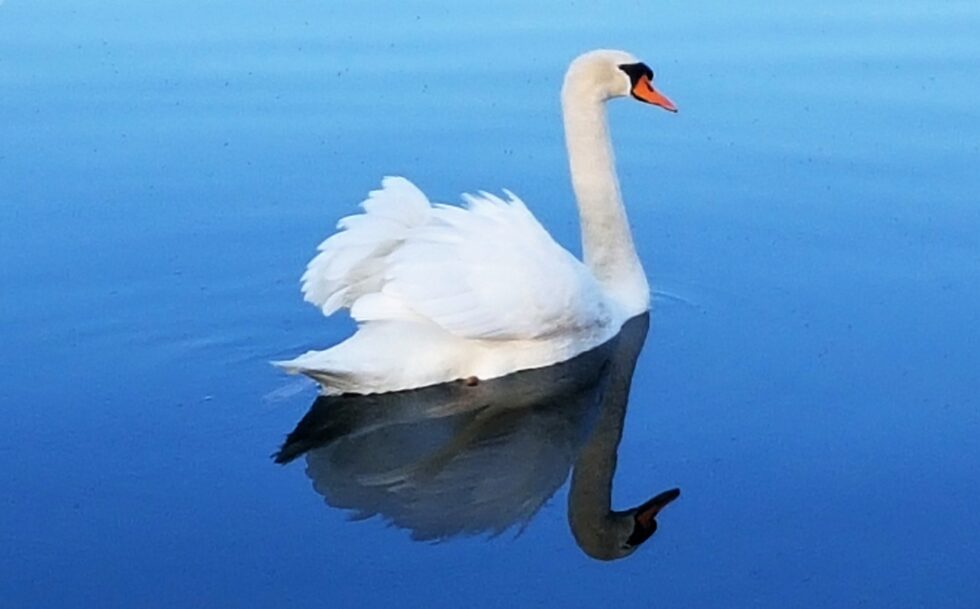By now last year’s cygnets will be gone. Between November and February, the young swans strike out on their own – or the parents chase them away. The parents have taught them all they can about surviving as a swan and it’s time for them to start their own lives.
Where do they go? In Canada, we don’t ring or otherwise mark Mute Swans as we do Trumpeters or as they do Mutes in the UK. This makes it hard to track individual birds, but it is known that the youngsters find open water well outside their parents’ territory. There they will join flocks of swans for few years and fly around until they pick a mate, find a territory of their own, and start nesting themselves.
Mute Swans are not only loyal partners who bond for life but are also devoted parents. Indeed, Mute Swans spend about 80% of their adult lives engaged in reproducing and rearing their young. While each parent has some distinct roles, both take part in everything from nest building to the care, feeding, and protection of the cygnets.
This time of year is the only break the parents get.
In March or April breeding season starts again. The parents will agree on the nest site, likely last year’s if it was successful. The pen (female/mother) will start laying eggs in April that will hatch in May or June – if they are not predated, flooded, or destroyed by conservation authorities. In Ontario, conservation authorities destroy all the Mute Swan eggs they find, which deprives the swans of the chance to have and raise their young.
It is awe-inspiring to watch bonded pairs go through these annual cycles. It is anxiety-producing as well, as we can only wait and hope that eggs survive many natural risks and evade destruction, so the swans get to be parents and we get to watch cygnets hatch and grow.

